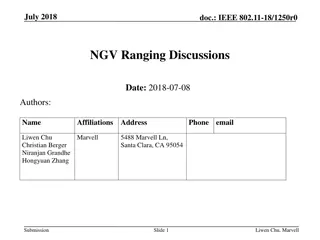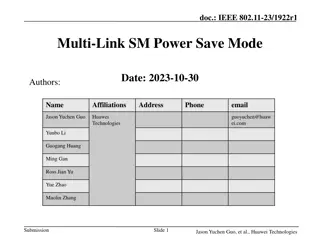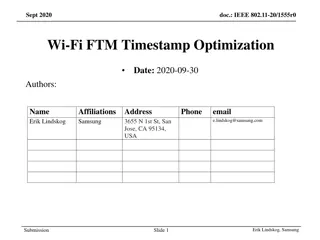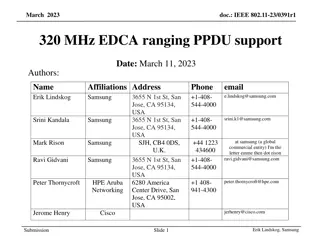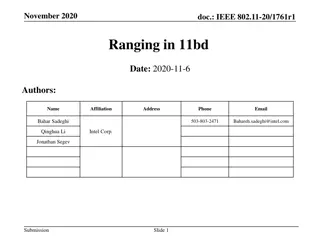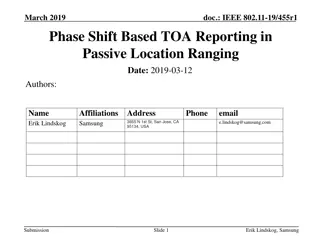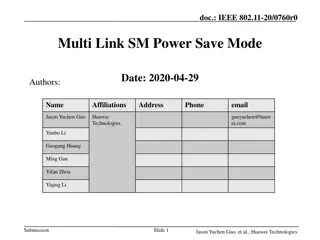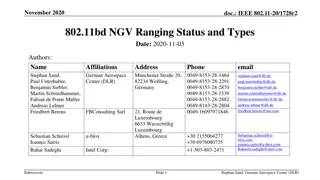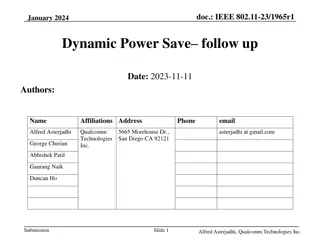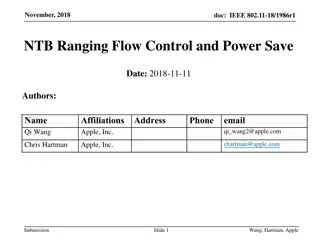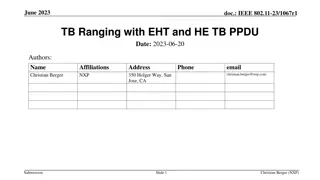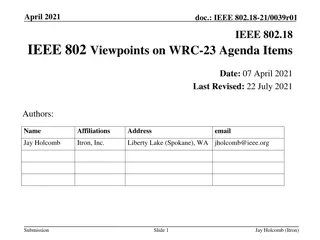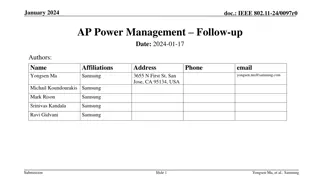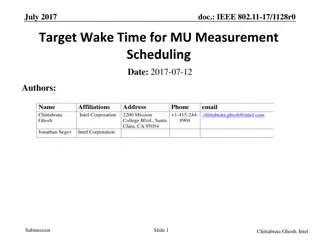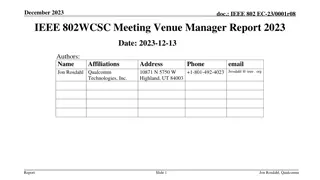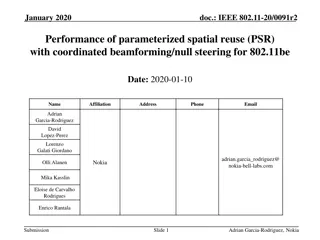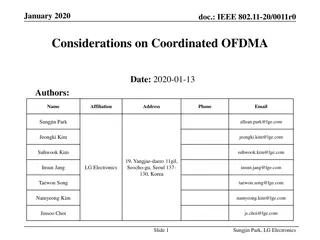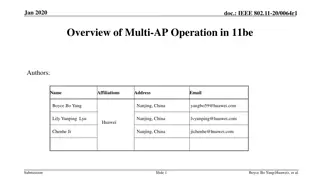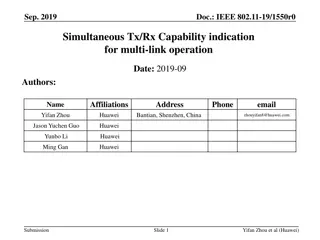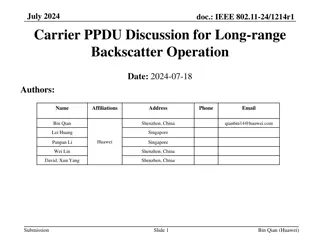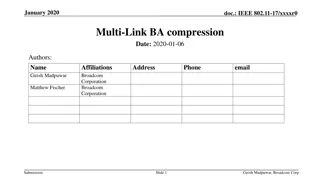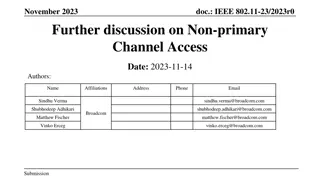IEEE 802.11-17/1739r0 Power Save Operation for Ranging Measurements
Presentation discussing a power efficient scheduling mechanism for power save STAs conducting measurements in the context of IEEE 802.11-17/1739r0 amendment. The proposal focuses on utilizing NDP-based sounding mechanisms for measurement phases to enhance resource allocation efficiency.
Download Presentation

Please find below an Image/Link to download the presentation.
The content on the website is provided AS IS for your information and personal use only. It may not be sold, licensed, or shared on other websites without obtaining consent from the author. Download presentation by click this link. If you encounter any issues during the download, it is possible that the publisher has removed the file from their server.
E N D
Presentation Transcript
Nov 2017 doc.: IEEE 802.11-17/1739r0 Power Save Operation for Ranging Measurements Date: 2017-11-08 Authors: Name Chittabrata Ghosh Affiliations Intel Corporation Address 2200 Mission College Blvd., Santa Clara, CA 95054 Phone +1-415-244- 8904 email chittabrata.ghosh@intel.com Jonathan Segev Intel Corporation Submission Slide 1 Chittabrata Ghosh, Intel
Nov 2017 doc.: IEEE 802.11-17/1739r0 Abstract In this presentation, we propose a power efficient scheduling mechanism for power save STAs that intend to perform 11az-based measurement Submission Slide 2 Chittabrata Ghosh, Intel
Nov 2017 doc.: IEEE 802.11-17/1739r0 Introduction The 11az amendment has agreed on using NDP-based sounding mechanism for measurement in the measurement phase Within a single TXOP, the UL sounding is followed by the DL sounding In UL sounding, UL NDPs are solicited from STAs assigned resources identified in the Trigger frame However, for efficient resource allocation, the AP needs to identify the STAs that intend to perform measurements We have agreed to have a polling phase prior to the MU measurement phase Slide 3 Submission Chittabrata Ghosh, Intel
Nov 2017 doc.: IEEE 802.11-17/1739r0 Discussion on Single Availability Window A single availability window shall consist of the following frame exchanges: - A polling phase consisting of a TF for polling all STA assigned to the availability window - Sounding phase comprising of the TF for UL sounding, UL NDPs, DL NDPA, and DL NDP - Single Location Measurement Report (LMR) from AP to STAs, followed by LMRs from STA s to the AP - The sequence is TBD Polling Position (FTM) Sounding part Polling subset of STAs due to BW constraint UL NDP STA n Tx m Location Meas. Report DL NDP NDPA TF UL NDP SIFS SIFS SIFS SIFS SIFS Single availability window Submission Slide 4 Chittabrata Ghosh, Intel
Nov 2017 doc.: IEEE 802.11-17/1739r0 Discussion on Single Availability Window Contd. In case of BW constraint when the rSTA is not capable of polling all STAs assigned to this availability window - Propose to have an indication within the TF Poll that an additional TF Poll is expected within the same availability window - Propose to use the Cascade Indication subfield in Common Info field of Trigger frame for indication Polling Polling Position (FTM) Sounding part Cascade Indication = 1 Cascade Indication = 0 Polling larger # of STA for resource request. Identify the STA require meas. Polling remaining STAs due to BW constraint UL NDP STA n Tx m Location Meas. Report DL NDP NDPA TF UL NDP SIFS SIFS SIFS SIFS SIFS Single availability window Submission Slide 5 Chittabrata Ghosh, Intel
Nov 2017 doc.: IEEE 802.11-17/1739r0 Construction of Trigger Frame for Poll Reuse of Cascade Indication Value type subfiled = 11az Cascade Indication Cascade Indication: This subfield indicates whether there is an additional TF for poll in the same current availability window If the bit is set to 1, an additional TF for poll will be transmitted by the rSTA in the same availability window Otherwise, set to 0 Trigger sub- type = Poll Submission Slide 6 Chittabrata Ghosh
Nov 2017 doc.: IEEE 802.11-17/1739r0 Summary We have proposed the frame exchange sequence within a single availability window In case of limited BW availability, we propose to use Cascade Indication subfield to extend the availability window Submission Slide 7 Chittabrata Ghosh
Nov 2017 doc.: IEEE 802.11-17/1739r0 Straw Poll 1 In each availability window there is nominally a single poll, each poll is to all STAs assigned to the availability window. If the available BW does not allow for the polling of all STAs within the group there is an indication within the TF Poll that an additional TF Poll is expected within the availability window. Within the availability window there is a single measurement for those STAs responding to the poll (and correctly received) with the relevant LMRs feedbacks. Submission Slide 8 Chittabrata Ghosh, Intel


